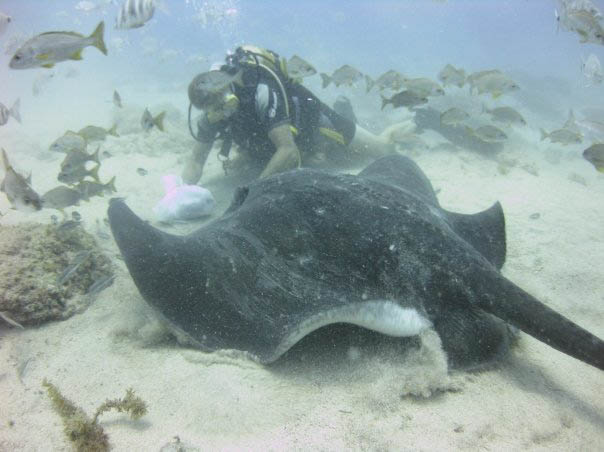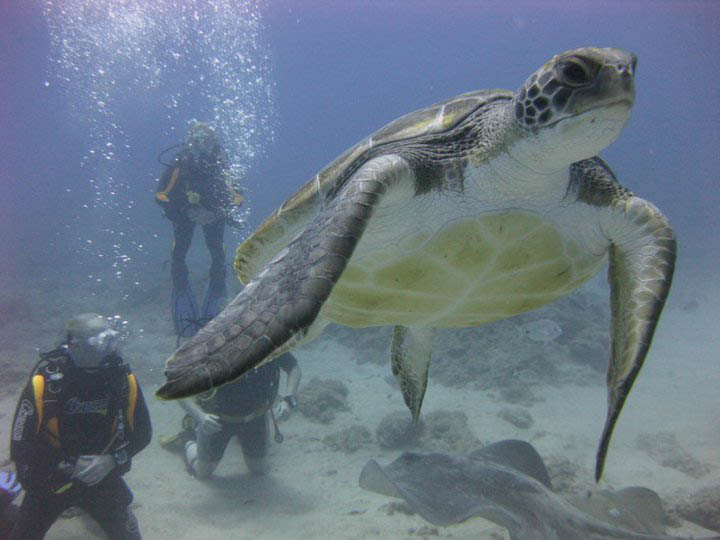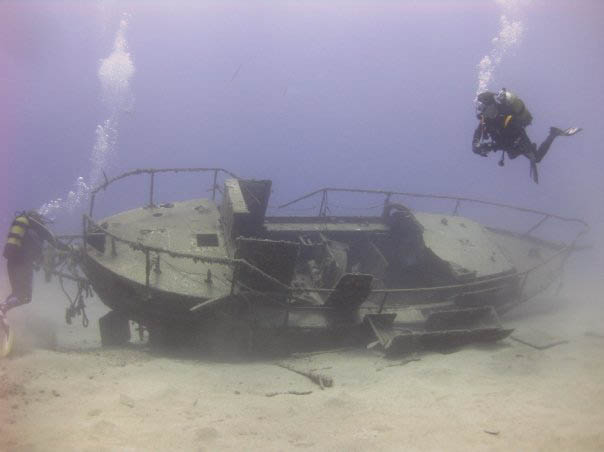The Canary Islands is a popular diving location, which beauty is usually compared to diving in Caribbean destinations, like the British Virgin Islands, Caicos Islands or the Bahamas. As a sequence of volcanic eruptions formed the islands, divers can enjoy unprecedented seascapes, such as volcanic arches, tunnels, caves, or canyons.

Tenerife, the biggest island out of the 7 Canary Islands, attracts thousands of adventure divers on a yearly basis who want to explore the Canarian underwater paradise. Why do I call it a paradise? Pretty simple. Tenerife offers the following diving conditions and possibilities:
- Warm water temperature all year round
- Unique biodiversity
- 30+ meters visibility
- Breath-taking topography
- Shipwrecks to discover
Let’s elaborate on them one by one.
- Water temperatures never drop much below 17-18° C/63-64° F in Tenerife
Due to their fantastic location, lying at the eastern edge of the Atlantic Ocean, off the northwest coasts of Africa, the Canary Islands are usually called the ‘Fortunate Islands’ because of their subtropical climate. Even during the winter months, the temperature doesn’t fall below 15-17°C, while it rises above 35°C in summer. It doesn’t worth comparing these temperatures to the same values in your country, because the proximity of the Equator, thus the angle of incidence of the sun gives a totally different temperature sensation, which is much warmer than in most countries.
Because of this factor, the water temperature is around 17-18° C/63-64° F in winter and around 23°C/73°F in summer. Typically, 5mm wet suits in summer and 7mm suits in winter will keep you comfortable, while discovering the Atlantic Ocean.
- Unique biodiversity fancied by scuba-divers
While scuba diving in Tenerife, you will be able to discover the exuberant biodiversity of this region. The species living underwater are a combination of Tropical, Mediterranean, and Caribbean species. You will be able to see a range of colourful fish including parrotfish, wrasse, damselfish, glass-eyes, eels, trumpet fish, barracudas, amberjacks, groupers, angel sharks and more.
Apart from these, Tenerife is famous for octopus-, ray-, dolphin-, turtle-, or whale sightings. The most popular diving site in Tenerife is called “Stingray city”, I guess I don’t have to go in details why it received this name.
- 30+ meters visibility
There is nothing more important for divers than visibility. With crystal clear waters, Tenerife is awaiting you with usually 30+ meters visibility, depending on local conditions.
- Unprecedented volcanic seascape
Even though Tenerife’s biodiversity is really one of a kind, most divers have an interest in the volcanic seabed and seascape, which has many dramatic rock formations. The volcanic rock has been eroded in many of Tenerife’s dive sites to create caverns, canyons, and spectacular underwater arches. Near the shores of Las Galletas, on the southern part of Tenerife, there is a diving site called the “Steps”, where divers can enjoy volcanic, literally step-like formations, as they descend to the deep.

- Wreck diving
Tenerife is surrounded by wrecks. Now I am not only talking about shipwrecks but planes too. Most ships sank due to an accident, like overloading, but there are a few, which submerged into the Atlantic Ocean because the Canarians were defending their territory against the British, or sank deliberately to restore the fragile underwater life.
One of my favourites is the El Condensito Wreck, which ran aground in 1972, while carrying concrete for construction. Now the shipwreck lays between 10-18 meters, which makes it a perfect scuba-diving spot for beginners and more experienced divers alike.
Did you get in the mood of diving in the waters of Tenerife, after reading this article? Get in touch with Atlantic Divers, and reserve your spot today.







